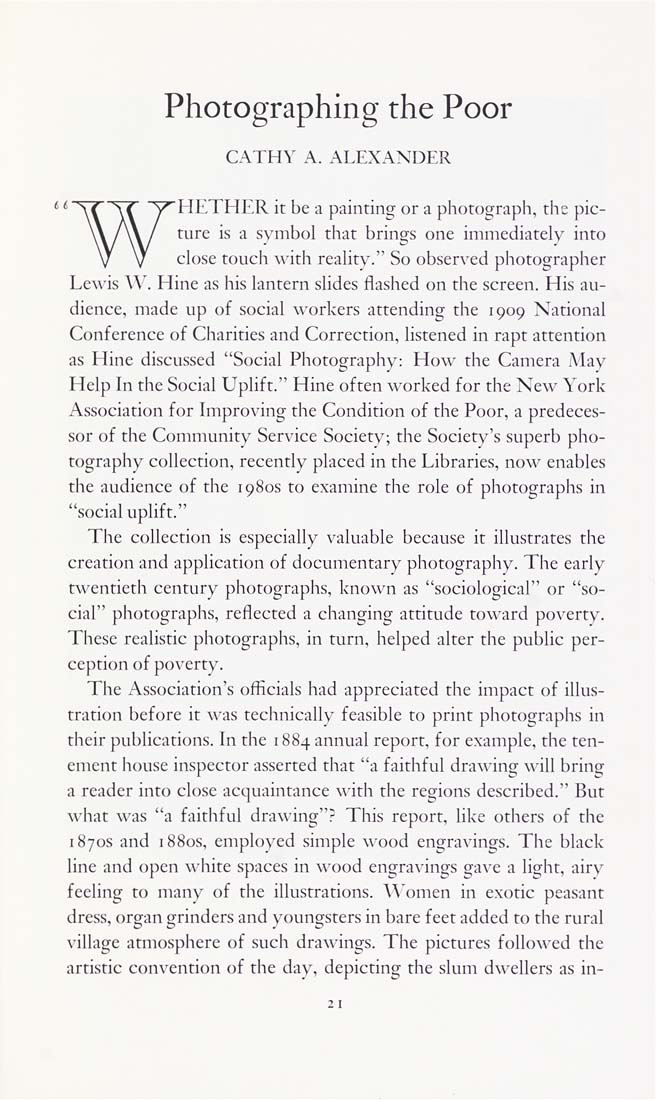Columbia Library columns (v.32(1982Nov-1983May))
(New York : Friends of the Columbia Libraries. )
|
||
|
|
|
|
| v.32,no.1(1982:Nov): Page 21 |

Photographing the Poor CATHY A. ALEXANDER HETHER it be a painting or a photograph, tiie pic¬ ture is a symbol that brings one immediately into close touch with reality." So observed photographer Lewis W. Hine as his lantern slides flashed on the screen. His au¬ dience, made up of social workers attending the 1909 National Conference of Charities and Correction, listened in rapt attention as Hine discussed "Social Photography: How the Camera May Help In the Social Uplift." Hine often worked for the New Y'ork Association for Improving the Condition of the Poor, a predeces¬ sor of the Community Service Society; the Society's superb pho¬ tography collection, recently placed in the Libraries, now enables the audience of the 1980s to examine the role of photographs in "social uplift." The collection is especially valuable because it illustrates the creation and application of documentary photography. The early twentieth century photographs, known as "sociological" or "so¬ cial" photographs, reflected a changing attitude toward poverty. These realistic photographs, in turn, helped alter the public per¬ ception of poverty. The Association's officials had appreciated the impact of illus¬ tration before it was technically feasible to print photographs in their publications. In the 1884 annual report, for example, the ten¬ ement house inspector asserted that "a faithful drawing will bring a reader into close acquaintance with the regions described." But what was "a faithful drawing"? This report, like others of the 1870S and 1880s, employed simple wood engravings. The black line and open white spaces in wood engravings gave a light, airy feeling to many of the illustrations. \\'omen in exotic peasant dress, organ grinders and youngsters in bare feet added to the rural \illage atmosphere of such drawings. The pictures followed the artistic convention of the day, depicting the slum dwellers as in- |
| v.32,no.1(1982:Nov): Page 21 |







